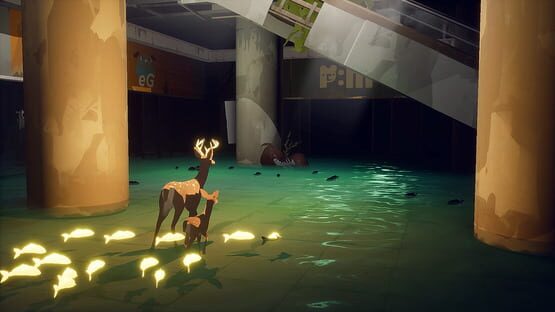

I think of all the games on this list, Night in the Woods is the most unique in how it presents choices to you. With all that said, let’s talk about five games that use choice in unique and interesting ways. In fact, if you’re looking for something more lighthearted and chill, you can instead check out this list of cozy, relaxing games on Steam. If these things upset you, I won’t feel bad if you turn away now. Other entries on the list include murder, psychosis, breaks from reality, and toxic relationships with a lot of insulting or combative dialogue. One game on this list is about war, violence, PTSD, and psychosis, so there’s a lot there. There will be an image after the title of each of the five games, giving you some space between the title and the content, so if you don’t want to have one of these games spoiled, you should have time to back away before things get too intense.Īlso, there is some potentially disturbing content here, so be warned. It’s sort of hard to talk about these interactive experiences - and to specifically talk about the importance of choice - without spoilers. Just so you know ahead of time, there will be heavy spoilers for every single one of these games. All of these games are more than that, though, so I want to cover each one in a good amount of depth.

Honestly, this list might as well be called “Five Games That Lucas Really Likes,” because I could write a whole article on each of them, and I love games that make their choices feel meaningful. Because of the agency they give players, all of these are good examples of how games can interact with the player, and where games can go as a truly interactive medium.

So I’m pointing out five games that use choice in interesting ways. I think dialogue trees have become pretty standard at this point, though games don’t always make those as meaningful as they are in the games I mentioned in the previous sentence. Notable examples include Star Wars Jedi Knight: Dark Forces II (1997) and Fable (2004), and later games like BioShock (2007) and Dishonored (2012) would expand upon these moral systems in profound and interesting ways.Īnd then there’s the concept of dialogue trees, which you’ll see in Mass Effect (2007) and Telltale’s The Walking Dead (2012). In the late-1990s and into the aughts, a lot of game developers were toying with the idea of moral choices having an impact on gameplay. But as games have evolved, the mechanics that drive meaningful decisions have only grown more complex. If you really get down to it, the player has always been able to make choices, from steering through mazes in Pac-Man to deciding if you want to ditch the Tanooki Suit for a Fire Flower in Super Mario Bros. Tan explains his game on the official website as follows: “Two deer in a strange, abandoned world without people must find their way home.” On your trip to the woods, look for food, shelter, protection, and answers.Player choice is a constantly evolving concept in the games industry.

Way to the Woods has been in development since then, with E3 2019 serving as its final summer grilling before its 2020 release. When the game made it to the main page of Reddit, it piqued the interest of Team17, a publisher of indie games such as Allison Road and Yooka-Laylee. Tan, who was just 16 at the time, shared images of his idea on Reddit in 2015 while “nervously” awaiting a response from his development grant application. Way to the Woods might appear familiar because it went viral a few years ago. Anthony Tan conceived and solo developed Way to the Woods, an experience he says is “immensely hard, humbling, and gratifying,” and contains music by Aivi & Surasshu, the composers for Steven Universe. Way to the Woods is an atmospheric third-person action-adventure game about a deer and fawn seeking a home in a curiously abandoned environment.


 0 kommentar(er)
0 kommentar(er)
